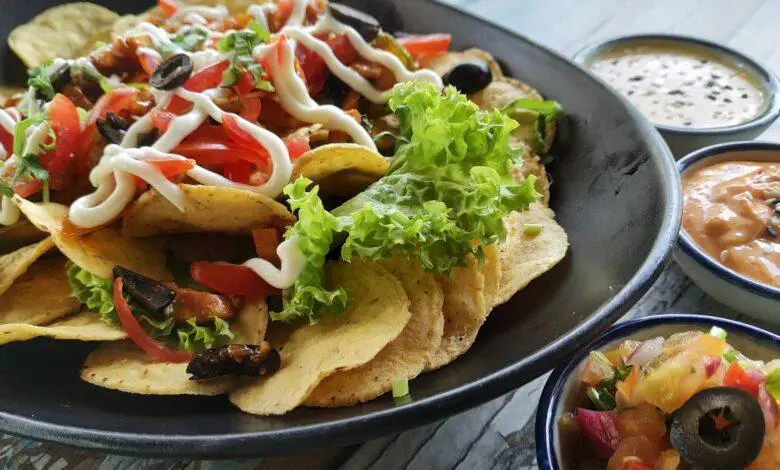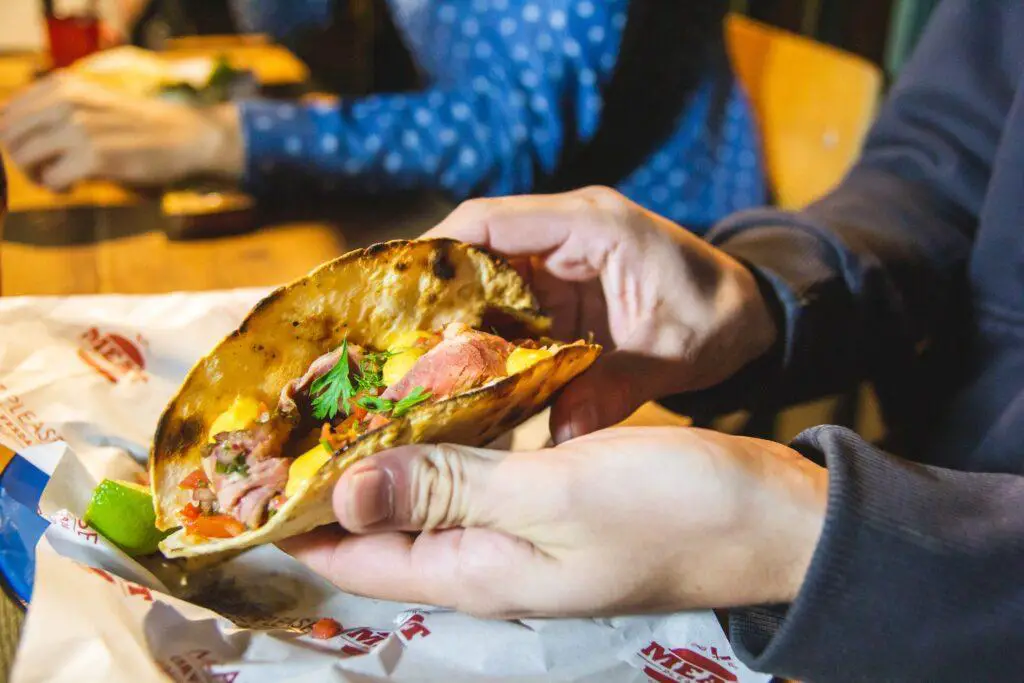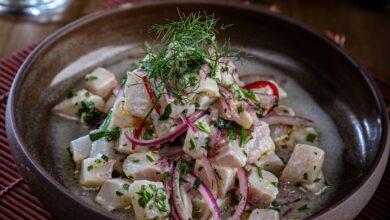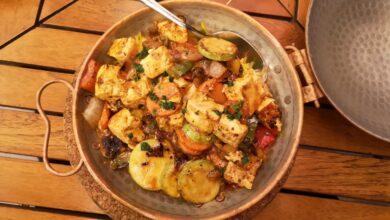🌮 Discovering the Wonders of Oaxacan Cuisine, Mexico 🇲🇽
Unveiling the Culinary Treasures of Oaxaca

Introduction
Imagine strolling through the vibrant streets of Oaxaca, Mexico, where the aroma of rich, complex flavors fills the air. The ancient traditions of indigenous communities, the influences of Spanish colonization, and the lush biodiversity of the region all come together to create one of the most captivating culinary experiences in the world: Oaxacan cuisine.
In this blog post, we will take you on a gastronomic journey to discover the wonders of Oaxacan cuisine. Nestled in the heart of Mexico, Oaxaca isn’t just a place to visit; it’s a place to savor. Oaxacan cuisine is a hidden treasure in Mexican gastronomy, and we’re about to unravel the secrets of its unique flavors, dishes, and traditions.
So, prepare your taste buds, embrace your culinary curiosity, and join us as we explore the vibrant world of Oaxacan cuisine, where every dish is a celebration of history, culture, and flavor.
Oaxaca: A Culinary Haven
Description of Oaxaca’s Vibrant Food Culture
Oaxaca, a charming state in southern Mexico, is renowned as a culinary haven, boasting a food culture as vibrant as the colorful markets that line its streets. From its bustling markets to the cozy, family-owned restaurants, Oaxacan cuisine is a sensory delight that beckons food lovers from all corners of the globe.
The heart of Oaxaca’s food culture lies in its rich indigenous heritage, melding seamlessly with Spanish influences. This fusion has given birth to an exceptional culinary tradition that is truly unique. The people of Oaxaca take immense pride in their culinary heritage, and you’ll find that many recipes have been passed down through generations, carefully guarded as treasured family secrets.
Geographical Factors that Influence the Cuisine
The cuisine of Oaxaca is profoundly influenced by its geography. Nestled in the southern highlands of Mexico, the state is blessed with diverse microclimates and topographies. The Pacific Ocean to the south and the rugged Sierra Madre Mountains to the north provide a wide range of ingredients, making Oaxacan cuisine incredibly diverse. The coastal regions offer an abundance of seafood, while the valleys are fertile ground for crops like maize, beans, and squash. The highlands, on the other hand, are known for their temperate climate, perfect for rearing livestock and cultivating coffee.
Oaxaca’s cuisine is also heavily influenced by its indigenous populations, each contributing their culinary traditions to the melting pot. This collision of cultures and access to an array of ingredients is the very foundation of Oaxacan gastronomy, creating a diverse and complex palate that’s truly one-of-a-kind.
The Unique Ingredients and Flavors that Define Oaxacan Dishes
What sets Oaxacan cuisine apart are the unique ingredients and flavors that define its dishes. The famed “mole,” a rich, complex sauce, is a perfect example. It comes in various forms, but perhaps the most famous is mole negro, a dark, velvety concoction made from a blend of chiles, chocolate, spices, and more. Each family has its own mole recipe, making it a dish of infinite variations and a source of pride.
Another defining ingredient is the “chapulines,” or grasshoppers, which are roasted and seasoned with chili, garlic, and lime. They are not only a delicious snack but a significant part of the state’s culinary identity. Oaxaca is also known for its intricate use of corn in tortillas, tlayudas, and memelas, giving its dishes a distinct flavor.
Signature Oaxacan Dishes
Mole: The Complex and Flavorful Sauce
Mole, the crown jewel of Oaxacan cuisine, is a complex and flavorful sauce that encapsulates the essence of this region’s culinary excellence. This rich, dark, and velvety concoction is the result of a labor-intensive process and a harmonious blend of diverse ingredients.
Mole derives its depth of flavor from a combination of chiles, chocolate, spices, and, often, fruits and nuts. The most famous variety, mole negro, is known for its deep, earthy notes and subtle spiciness. Each family in Oaxaca has its own cherished mole recipe, a closely guarded secret passed down through generations. This culinary gem reflects the soul of Oaxacan kitchens and is often the centerpiece of special occasions and celebrations. It’s poured over chicken, turkey, or even tamales, creating a savory symphony of flavors that is unparalleled in Mexican cuisine.
Tlayudas: Oaxaca’s Version of a Mexican Pizza
Tlayudas are to Oaxaca what pizza is to Italy. This beloved street food is a large, thin, and crispy tortilla, resembling a giant pizza crust, topped with an array of ingredients. While they share some visual similarities with pizza, the flavors and ingredients are distinctly Mexican, making tlayudas a unique and delightful dish.
The base is typically a large, toasted tortilla spread with asiento (unrefined pork lard), black beans, shredded Oaxacan cheese, and a variety of toppings like lettuce, avocado, salsa, and your choice of protein, often grilled meats. The final touch is a sprinkle of Oaxacan string cheese, adding a distinct creamy and slightly tangy flavor.
Chapulines: Crunchy and Flavorful Grasshoppers
Chapulines, or crunchy, flavorful grasshoppers, are a distinctive Oaxacan specialty that might make some visitors raise an eyebrow, but locals hold them dear to their hearts. These insects are sustainably harvested, then toasted and seasoned to perfection.
Chapulines are a popular snack, often sold at local markets or by street vendors. Seasoned with chili, garlic, and a hint of lime, they offer a delightful crunch and a unique, slightly smoky flavor. While they may seem unconventional to the uninitiated, chapulines are an excellent example of Oaxaca’s commitment to embracing traditional and local ingredients in its cuisine.
Other Lesser-Known Regional Specialties
Oaxaca is a treasure trove of lesser-known regional specialties, each reflecting the rich cultural tapestry of the state. For instance, the Tlayuda de Asiento adds a layer of flavorful pork lard to the traditional tlayuda, enhancing its taste and aroma. Likewise, the cheese from Oaxaca, with its delicate, stringy texture, is a favorite ingredient in various dishes.
Other regional gems include tejate, a pre-Hispanic drink made from maize and cacao, and queso de hoja, a unique cheese wrapped in banana leaves. For dessert, try nicuatole, a sweet and velvety corn pudding flavored with cinnamon and sugar.
In Oaxaca, every bite is a journey through history, tradition, and the natural bounty of the region. These signature dishes, from the celebrated mole to the intriguing chapulines, are emblematic of Oaxaca’s culinary identity and a testament to its status as a food lover’s paradise.

The Culinary Traditions of Oaxaca
The Role of Markets in Oaxacan Food Culture
Oaxacan culinary traditions are intrinsically linked to the vibrant and bustling markets that line the streets of this Mexican state. These markets play a pivotal role in Oaxacan food culture, serving as the epicenter of the region’s gastronomic identity. Here, an eclectic tapestry of colors, scents, and flavors unfolds, creating an immersive experience for both locals and visitors.
Oaxaca’s markets offer a sensory overload, with vendors proudly displaying an array of fresh, local ingredients. Colorful piles of fruits and vegetables, aromatic herbs, spices, and dried chiles adorn the stalls, showcasing the diverse bounty that the region’s geography offers. As you stroll through the market, the cacophony of voices haggling, the sizzling sounds of street food being prepared, and the warm smiles of vendors inviting you to taste their delicacies all add to the enchantment.
Visiting the markets of Oaxaca is not just a shopping expedition; it’s a cultural journey. Locals and tourists alike come to absorb the essence of Oaxacan cuisine, to appreciate its origins and the significance of these markets in preserving traditional flavors and ingredients.
The Significance of Family and Community in Cooking
In Oaxacan culinary traditions, the family and community are at the heart of cooking. Meals are often a collective effort, with multiple generations coming together to prepare and enjoy food. The act of cooking is not just about nourishment; it’s a way of bonding, sharing stories, and passing down traditions from one generation to the next.
Many family recipes are treasured secrets, passed down through oral tradition. A mother or grandmother imparts her culinary wisdom to her children, and this knowledge is safeguarded as a valuable heritage. Cooking in Oaxaca is a communal experience, where the kitchen becomes a hub for family gatherings and celebrations.
Additionally, the community’s role in cooking extends to festivals and special events. Preparing large quantities of traditional dishes for celebrations, such as Dia de los Muertos (Day of the Dead), is a collective effort. It involves not only the immediate family but often the entire neighborhood, reinforcing the sense of community and shared culture.
The Preservation of Indigenous Cooking Techniques
Oaxaca prides itself on preserving indigenous cooking techniques that have been passed down for centuries. These methods are not only a testament to the resilience of Oaxacan culture but also a source of the region’s culinary richness.
One such traditional cooking technique is the use of a grinding stone, known as a “metate,” to grind spices, herbs, and chiles. This method imparts a unique texture and flavor to salsas and moles, preserving the authenticity of Oaxacan dishes.
Another integral aspect of Oaxacan cooking is the use of clay pots or “olla de barro.” These clay vessels are not just for cooking; they enhance the flavors and aromas of stews and mole. Their porous nature allows slow and even cooking, intensifying the depth of flavors.
Moreover, the preservation of indigenous ingredients such as native corn varieties, heirloom beans, and endemic herbs ensures that Oaxacan cuisine remains true to its roots. The commitment to these traditional techniques and ingredients is a testament to Oaxaca’s determination to safeguard its culinary heritage.
Culinary Adventures in Oaxaca
Cooking Classes and Workshops for Travelers
Embarking on a culinary adventure in Oaxaca often begins with participating in cooking classes and workshops specially designed for travelers. These immersive experiences are a fantastic way to get up close and personal with Oaxacan cuisine, learning its intricate secrets, and creating dishes that you can savor and share with your loved ones back home.
Cooking classes typically take place in traditional settings, such as open-air kitchens or family homes. Knowledgeable instructors guide you through the preparation of Oaxacan specialties like mole, tlayudas, or tamales. They explain the significance of each ingredient and share the cultural stories woven into every dish.
As you roll up your sleeves and engage in the cooking process, you not only hone your culinary skills but also gain a deeper appreciation for the traditions and techniques that have been passed down through generations. And, of course, the reward at the end of your hard work is the delicious meal you get to savor, enriched by the sense of accomplishment that comes with creating an authentic Oaxacan dish.
Dining in Traditional Oaxacan Restaurants
No culinary adventure in Oaxaca would be complete without indulging in the flavors of the region at its traditional restaurants. These establishments serve as culinary time capsules, preserving the heritage of Oaxacan cuisine.
Oaxacan restaurants offer an array of dishes that reflect the depth and diversity of the region’s gastronomy. From humble, family-owned eateries to more upscale dining establishments, each has a unique offering. One can savor the intricate flavors of mole, delight in the smoky notes of grilled meats, and relish the freshness of locally sourced ingredients.
These restaurants also provide an opportunity to experience the warm and welcoming Oaxacan hospitality. The atmosphere is often cozy and inviting, making dining an intimate and memorable experience. Plus, it’s not uncommon to encounter live traditional music or even mezcal tastings, adding an extra layer of authenticity to your culinary journey.
Street Food Experiences and Local Food Festivals
For the adventurous food lover, Oaxaca’s street food and local food festivals offer a vibrant and unforgettable culinary adventure. The streets of Oaxaca are lined with food vendors, each offering their specialties, from tlayudas to chapulines and everything in between.
Exploring the bustling street food scene allows you to taste the real, everyday flavors of Oaxaca. You can savor freshly made tlayudas, devour tacos filled with succulent meats, and try regional snacks like tejate and nieve (ice cream). The street food experience is not only a feast for the palate but also a feast for the senses, with the sights, sounds, and aromas of Oaxaca enveloping you.
Moreover, Oaxaca hosts numerous local food festivals throughout the year, celebrating everything from indigenous ingredients to regional specialties. These festivals offer a unique opportunity to engage with local communities and experience their culinary traditions. The Guelaguetza, for instance, is a famous cultural festival in Oaxaca where various regions of the state showcase their culinary delights, dance, and music, providing an immersive cultural and gastronomic experience.
In Oaxaca, every meal, whether it’s at a cooking class, a traditional restaurant, or from a street food vendor, is a culinary adventure waiting to be savored. These experiences not only tantalize the taste buds but also provide a deeper understanding of the culture, history, and warmth of the Oaxacan people.
The Flavors of Oaxaca Beyond Borders
The Influence of Oaxacan Cuisine on Mexican Food as a Whole
Oaxaca, often referred to as the “Land of the Seven Moles,” holds a special place in the heart of Mexican cuisine. Its culinary traditions have had a profound influence on Mexican food as a whole. Oaxacan flavors, ingredients, and techniques have permeated and enriched the broader Mexican culinary landscape.
One of the most iconic Oaxacan contributions to Mexican cuisine is, of course, mole. The seven distinct mole varieties, including mole negro, mole coloradito, and mole verde, showcase the complexity and depth of Oaxacan flavors. These moles have become staples not only in Oaxaca but throughout Mexico, with regional variations adding their unique twists.
The use of indigenous ingredients, such as various chili peppers, herbs, and edible insects, which are integral to Oaxacan cooking, has also spread to other parts of Mexico. The diverse corn varieties, from heirloom to blue and white, are now celebrated and utilized in tortillas and other dishes nationwide.
Oaxacan cuisine serves as a source of inspiration for chefs across Mexico, leading to a fusion of regional flavors. It’s not uncommon to find Oaxacan-inspired dishes on menus in Mexican restaurants across the country, ensuring that the legacy of Oaxacan cuisine continues to thrive.
Oaxacan Restaurants and Dishes Around the World
Oaxacan cuisine has transcended borders and found a global audience. In recent years, Oaxacan restaurants and dishes have been gaining international acclaim, with their flavors captivating food enthusiasts worldwide.
Prominent chefs, both Mexican and international, have introduced Oaxacan restaurants in major cities around the globe. These establishments offer authentic Oaxacan dishes like mole, tlayudas, and mezcal, providing an opportunity for those outside of Mexico to experience the rich tapestry of Oaxacan flavors.
Additionally, Oaxacan dishes have made their way onto menus in restaurants that specialize in world cuisines. The appeal of Oaxacan flavors, often characterized by their balance of sweet, savory, and smoky elements, has made them a popular choice for fusion dishes.
Notably, Oaxacan street food, such as chapulines (crunchy grasshoppers) and tlayudas, has been featured in international food festivals, making these unique culinary experiences accessible to adventurous eaters around the world.
The Role of Oaxacan Food in Promoting Cultural Exchange
Oaxacan food plays a significant role in promoting cultural exchange. It serves as a bridge that connects people from different parts of the world, fostering an appreciation for Mexican culture and traditions.
Oaxacan food festivals, both within Mexico and abroad, provide a platform for cultural exchange. They offer a glimpse into the heart of Oaxacan communities, showcasing not only the food but also the music, dance, and art that are integral to Oaxacan culture.
The traditional methods of preparing Oaxacan dishes, such as grinding ingredients with a metate or cooking with clay pots, are not only culinary techniques but also cultural artifacts that tell the story of a vibrant and enduring heritage. These methods are often demonstrated in cultural events and culinary workshops, creating opportunities for dialogue and understanding.
Oaxacan cuisine is a powerful ambassador of Mexican culture, transcending borders and promoting the rich tapestry of traditions, flavors, and stories that make Oaxaca a culinary and cultural treasure. It serves as a reminder that food has the unique ability to unite people and foster cultural exchange, making the world a smaller and more interconnected place.
FAQs
Q: Is Oaxacan cuisine very spicy?
A: Oaxacan cuisine can be spicy, but not all dishes are extremely hot. You can usually adjust the level of spiciness to your preference.
Q: Where can I try authentic Oaxacan cuisine in Oaxaca?
A: You can find authentic Oaxacan cuisine in local markets, street food stalls, and restaurants throughout Oaxaca. Each place offers its own specialties.
Q: What is the best way to explore Oaxacan cuisine as a visitor?
A: To fully immerse yourself in Oaxacan cuisine, try local markets, street food, and cooking classes. You’ll get a taste of the region’s culinary traditions.
Q: What is the significance of mole in Oaxacan culture?
A: Mole is an integral part of Oaxacan culture, often served at celebrations and important gatherings. It symbolizes community and tradition.
Q: Is mezcal similar to tequila?
A: While mezcal and tequila both come from agave plants, they have different flavors and production processes. Mezcal is often smokier and more complex in taste.
Q: Are there vegetarian or vegan options in Oaxacan cuisine?
A: Yes, many Oaxacan dishes can be adapted to vegetarian or vegan diets. Just ask for substitutions or omissions when ordering.
Conclusion
As the sun sets over the charming streets of Oaxaca, it becomes clear that Oaxacan cuisine is not just about food; it’s a cultural treasure that captivates the heart and palate. We’ve delved into the rich flavors of mole, savored tlayudas, and even explored the world of chapulines, all while discovering the cultural traditions that make Oaxacan food so special.
As you consider your next culinary adventure, remember that Oaxaca, with its vibrant markets, traditional cooking techniques, and community-focused food culture, beckons. Whether you’re a seasoned food enthusiast or a curious traveler eager to explore new tastes, don’t hesitate. Oaxacan cuisine is calling, and it promises unforgettable experiences and cherished memories with every bite. Get out there, savor the flavors, and create your own culinary story in this extraordinary corner of Mexico.
UP NEXT




Facebook Comments